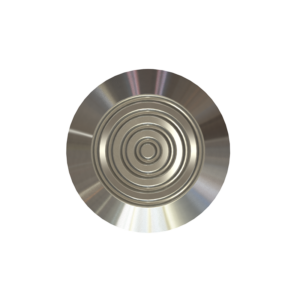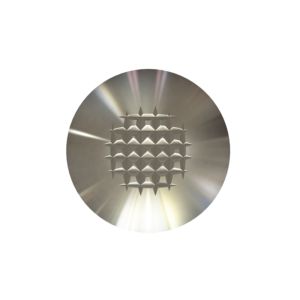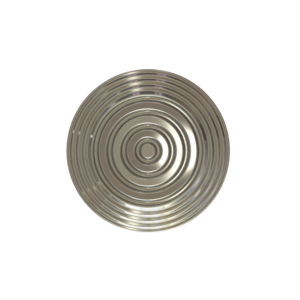Which tactile stud pattern is best for grip?
Tactile studs come in a variety of shapes and sizes. The possibilities are limitless but as a rule, there are a handful of patterns that crop up time and time again, but are they the best option for you?
What types of tactile stud patterns are there?
There are three primary groups of tactile stud patterns, and they are plain surface, crosshatch, and circular grooved. These patterns are also often used in combination with various finishes like the dome, bevelled, and flat shapes. Even within these groups, there are variations of each pattern type.
Plain Surface Tactile Studs
The three primary types of plain surface tactile studs and shape combinations are bevelled, flat and dome.
- Domes are easily felt underfoot as the stud provides no flat surface to stand on.
- Bevelled studs are more forgiving as they feature a plateau at the top of the stud before sloping away at the extremes.
- Flat studs are almost flush with the underlying surface and are the most unobtrusive
Crosshatch Tactile Studs
The defining feature of crosshatch pattern studs is the intersecting grooves. The main difference between them is the number of grooves and how they’re spaced in relation to each other. The layout of the grooves themselves can drastically alter the grip profile of the stud, with more grooves providing a grippier surface. Crosshatch tactile stud patterns are often applied to bevelled shapes due to manufacturing constraints, as it wouldn’t be practical to apply them to a dome-shaped stud. Some crosshatch patterns can be added in such a way that they provide a raised point in between the grooves, providing further grip.
Circular Grooved Tactile Studs
One of, if not the most common pattern for tactile studs is the circular grooved pattern, sometimes referred to as a record pattern. This pattern is found on bevelled and more commonly dome studs as it leverages the more intrusive shape and provides extra grip when compared to the smooth dome stud.
Why do tactile stud patterns matter?
Tactile stud patterns have two main reasons for being implemented, one is for aesthetic purposes and the second is to provide extra grip while communicating tactile signals. The latter is important in situations where tactile studs are going to meet contaminants or rainfall. From a visual perspective, it’s nice to add some flair to an installation, especially with a tactile pattern or an alternative metal. The key point is the grippy nature of these patterns, as plain surface studs alone under the wrong circumstances can become a hazard.
Which tactile stud pattern is the best for grip?
The ideal pattern for grip is the crosshatch pattern, as the intersecting grooves provide more friction when they meet the sole of a shoe. The circular grooved pattern also provides increased grip over the plain surface studs but not as much as crosshatch studs.
Often tactile studs and strips will come with an R rating or grade to quantify the level of friction they provide – To read more about anti-slip tests click here
When should I use crosshatch tactile studs?
Crosshatch tactile studs can be used in any situation and are best suited to scenarios where they’ll encounter contaminants, rainfall, heavy foot traffic or when installed on an upward or downward slope. They provide that extra bit of friction to prevent any slips, trips or falls.
When should I use circular grooved tactile studs?
Circular grooved tactile studs in the bevelled form are still suitable in the same kinds of scenarios as crosshatch tactile studs but are going to provide slightly less grip.
Their domed counterpart is great for drawing pedestrians’ attention to upcoming hazards or changes in the terrain, as they are much more tactile feeling underfoot. The added grooves provide slightly more grip than the plain finish alternative.
When should I use plain surface studs?
Plain surface studs can be used in all the same scenarios as the other patterns but will not provide the grip levels of the grooved and crosshatch alternatives. They are more prone to becoming slippery in wet weather or when faced with contaminants.
If you have any questions surrounding tactile stud patterns, give us a call on 01686 807 450 or email us at [email protected] and we’ll be happy to help.







